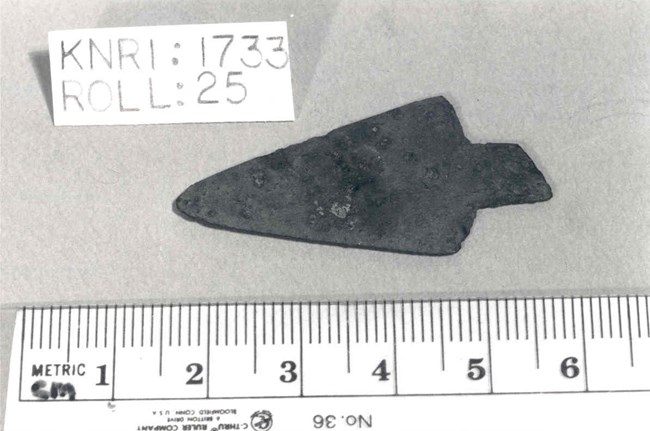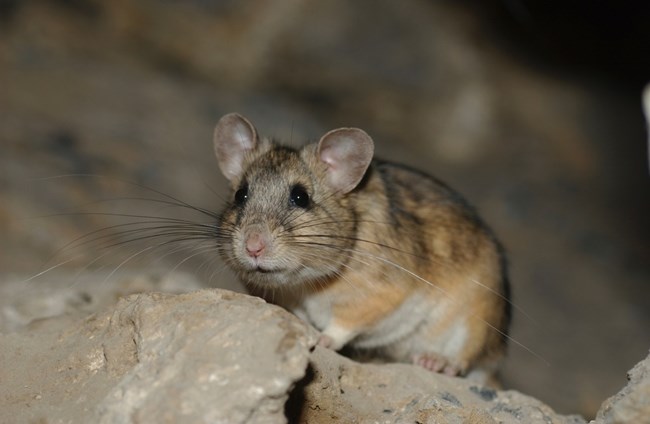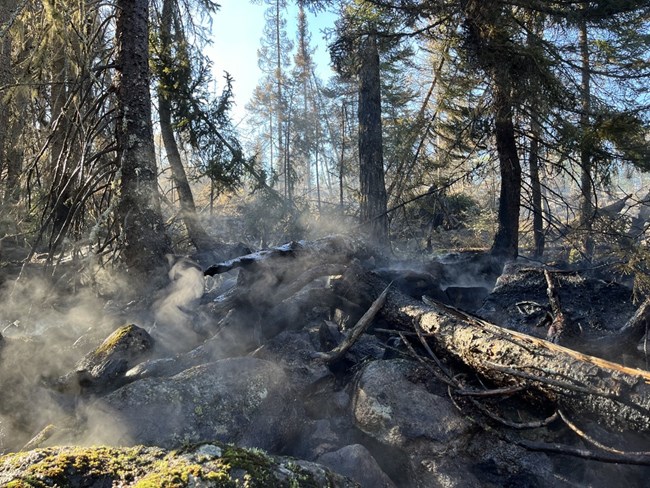Last updated: May 9, 2023
Article
How Are Archeological Sites Made?
Archeological sites and features are typically made through processes of deposition, reclamation, disturbance, and environmental impacts. When archeologists conduct archeological investigations, they consider which processes were at play. These processes are part of an archeological resource's story.

Deposition is the way people left artifacts or features behind. It may be purposeful (such as when people settle a village) or accidental (like if someone drops something during transit or leaves toolmaking debris). Some sites are buried when another is built atop it (such as in a pueblo or city).
The Prince William County Poor House was created in 1794 after the disestablishment of the Anglican church in the 1780s. Construction began in 1793 on “a framed house Sixteen Feet Square with a Stone or Brick Chimney weather Boarded & Covered with Shingles and as many Logged Cabins as they may Judge Sufficient for the present.” Learn more: The Residents of the Poor House

Reclamation processes transfer materials out of use, back into use. For example, a culture may scavenge bricks from an abandoned structure to build a new structure.
At Sakakawea, now Knife River Indian Villages National Historic Site, archeologists discovered hundreds of stone tools. The Hidatsa who manufactured them, however, were not the eighteenth-century villagers, but people who lived several decades earlier. How could this be? Learn more: Hidatsa Flintknappers, Potters, and Smallpox

Disturbance changes the contexts of materials within the site itself. It moves and mixes materials from and between different layers. Examples of disturbance are farming, heavy construction, rodent burrowing, and natural forces such as floods.
Pack rats burrow through archeological sites to create their underground nests. In the process of disturbing sites, pack rats also create climate time capsules. Archeologists working at Chaco Culture National Historical Park investigate the middens to discover the adaptations of the Chaco people to their surroundings during periods of climate change. Learn more: What Do Pack Rats Reveal About Ancient Chaco Architecture?

Environmental impacts are when natural processes bury or reveal sites. They can include storms that deposit soil or water, wind that carries soil away, and freeze and thaw cycles that expose sites.
Fire can reveal archeological sites and damage their contents. Understanding the effects of high fuel loads and the resultant high heat exposure to archeological resources during fire is one necessary step towards developing a range of climate change responses for land managers to implement on the ground. Learn more: Wildfire and Archeology in the Jemez Mountains
